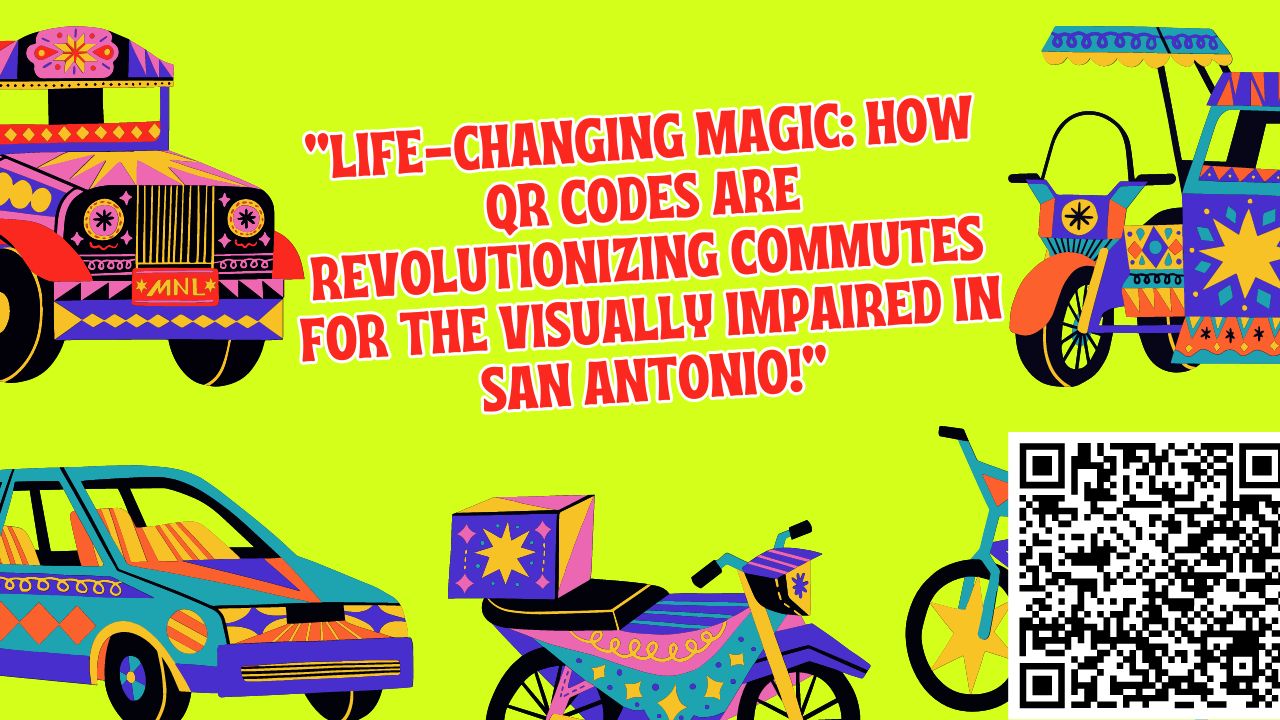Revolutionizing Commute: QR Codes at San Antonio Bus Stops Enhance Accessibility 2024

In recent years, technological advancements have ushered in transformative changes in various aspects of daily life, including transportation. Among these innovations, Quick Response (QR) codes have emerged as a powerful tool, revolutionizing how commuters access information at bus stops. Nowhere is this impact more profound than in San Antonio, where QR codes have been implemented to cater specifically to visually impaired travelers, significantly enhancing their commuting experience.
San Antonio, a bustling city known for its vibrant culture and rich heritage, boasts an extensive public transportation network, facilitating the movement of thousands of residents and visitors daily. However, for visually impaired individuals, navigating the complexities of bus routes and schedules can present significant challenges. Recognizing this issue, authorities in San Antonio have embraced QR code technology as a solution to improve accessibility and inclusivity for all commuters.
QR codes, originally developed in Japan in the 1990s, have gained widespread popularity due to their ability to store large amounts of data in a compact, easily scannable format. By encoding information such as bus schedules, route maps, and real-time updates, QR codes offer a seamless way for commuters to access essential information using their smartphones. In San Antonio, this technology has been ingeniously integrated into bus stop signage, making vital information readily available to visually impaired travelers.
At the heart of this initiative lies a commitment to inclusivity and equal access to transportation services. By strategically placing QR codes at bus stops throughout the city, authorities have leveled the playing field for visually impaired commuters, empowering them to navigate the public transit system with greater confidence and independence. Gone are the days of relying solely on auditory announcements or assistance from fellow passengers. With a simple scan of a QR code, travelers can access up-to-date information tailored to their specific needs.
The implementation of QR codes at San Antonio bus stops represents a paradigm shift in how cities address the accessibility needs of marginalized communities. Rather than viewing disability as a barrier, policymakers and technologists have embraced innovation as a means of fostering greater inclusion and participation in public life. This proactive approach not only enhances the quality of life for visually impaired individuals but also sets a precedent for other cities to follow suit.
One of the key benefits of QR code technology is its versatility. Unlike traditional signage, which is static and often outdated, QR codes can be dynamically updated in real time, ensuring that commuters always have access to the latest information. This dynamic nature is particularly beneficial in a fast-paced urban environment like San Antonio, where bus schedules may change frequently due to factors such as traffic conditions or special events.
Furthermore, QR codes offer a cost-effective solution for improving accessibility, requiring minimal infrastructure investment compared to other alternatives. By leveraging existing smartphone technology, cities can enhance the accessibility of their public transportation systems without the need for expensive hardware or complex installations. This scalability makes QR code technology an attractive option for municipalities seeking to improve accessibility without breaking the bank.
The impact of QR codes on visually impaired commuters in San Antonio cannot be overstated. For many individuals, the ability to independently access bus schedules and route information represents a newfound sense of freedom and autonomy. No longer reliant on external assistance, travelers can plan their journeys with confidence, knowing that essential information is just a scan away. This empowerment is not only transformative on an individual level but also contributes to a more inclusive and equitable society.
Moreover, the benefits of QR code technology extend beyond the visually impaired community, benefiting all commuters regardless of ability. By streamlining access to information, QR codes enhance the overall efficiency and usability of public transportation systems, reducing wait times and increasing passenger satisfaction. Additionally, the widespread adoption of QR codes fosters a culture of innovation and digital literacy, positioning San Antonio as a leader in accessible urban mobility solutions.
Looking ahead, the potential for QR code technology to further enhance accessibility in public transportation is limitless. As cities continue to embrace smart infrastructure and digital innovation, QR codes are likely to play an increasingly central role in shaping the future of urban mobility. From improving wayfinding for pedestrians to facilitating contactless ticketing, the applications of QR codes are as diverse as the communities they serve.
In conclusion, the implementation of QR codes at San Antonio bus stops represents a significant milestone in the journey towards a more accessible and inclusive public transportation system. By harnessing the power of technology to break down barriers and empower marginalized communities, San Antonio has set a precedent for cities around the world to follow. As QR code technology continues to evolve and expand, the possibilities for enhancing accessibility and inclusivity in urban environments are truly endless.






